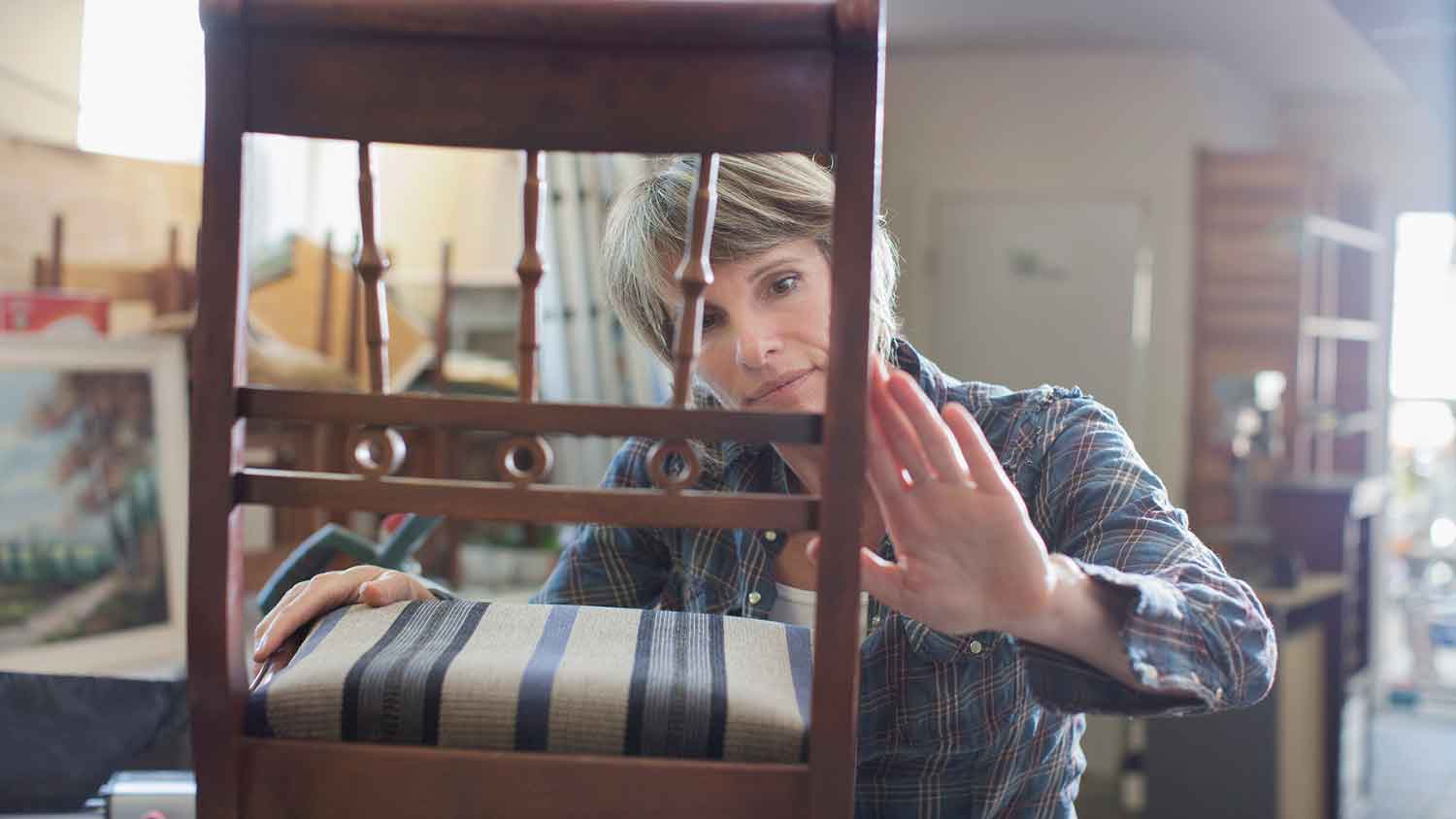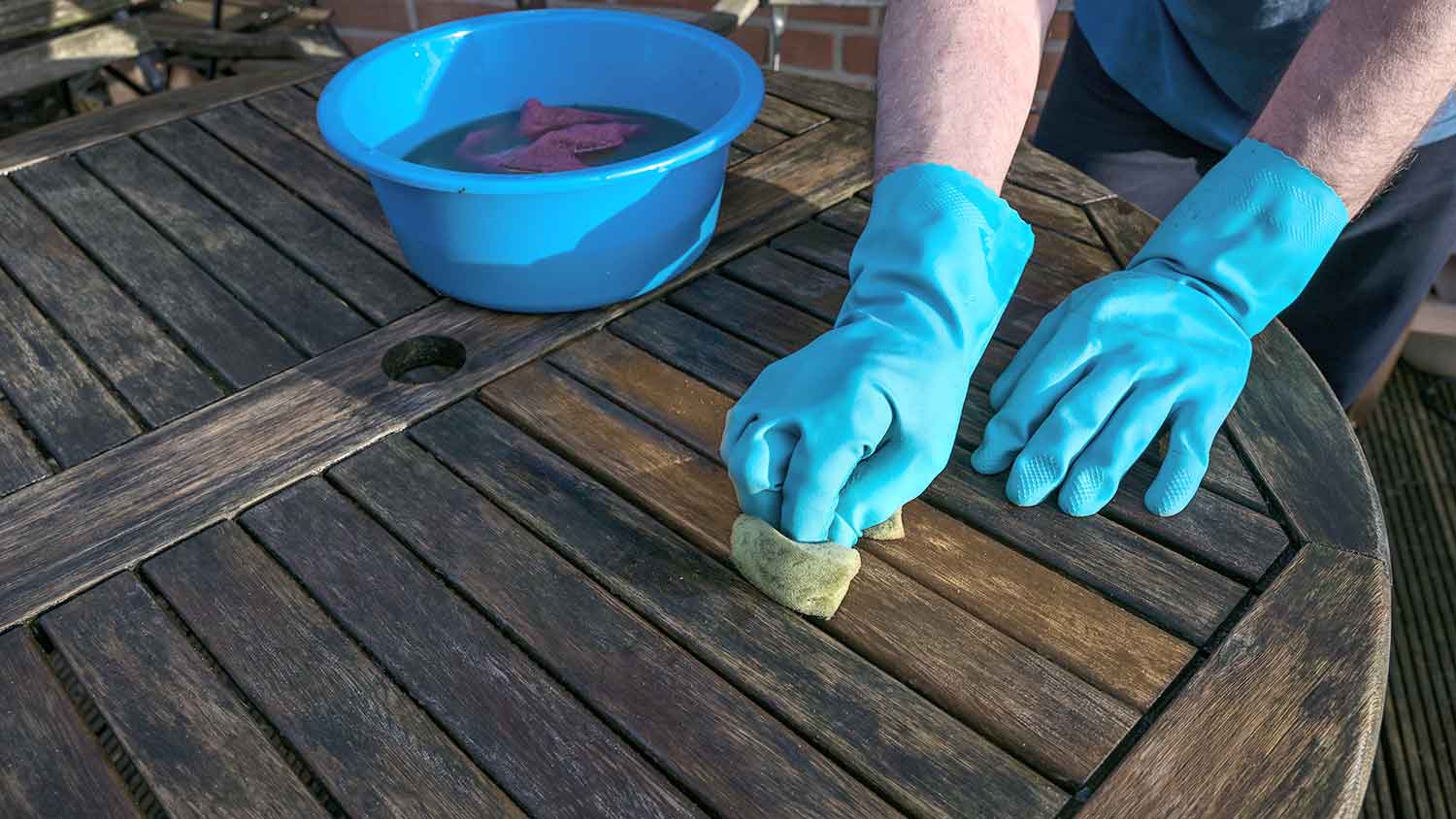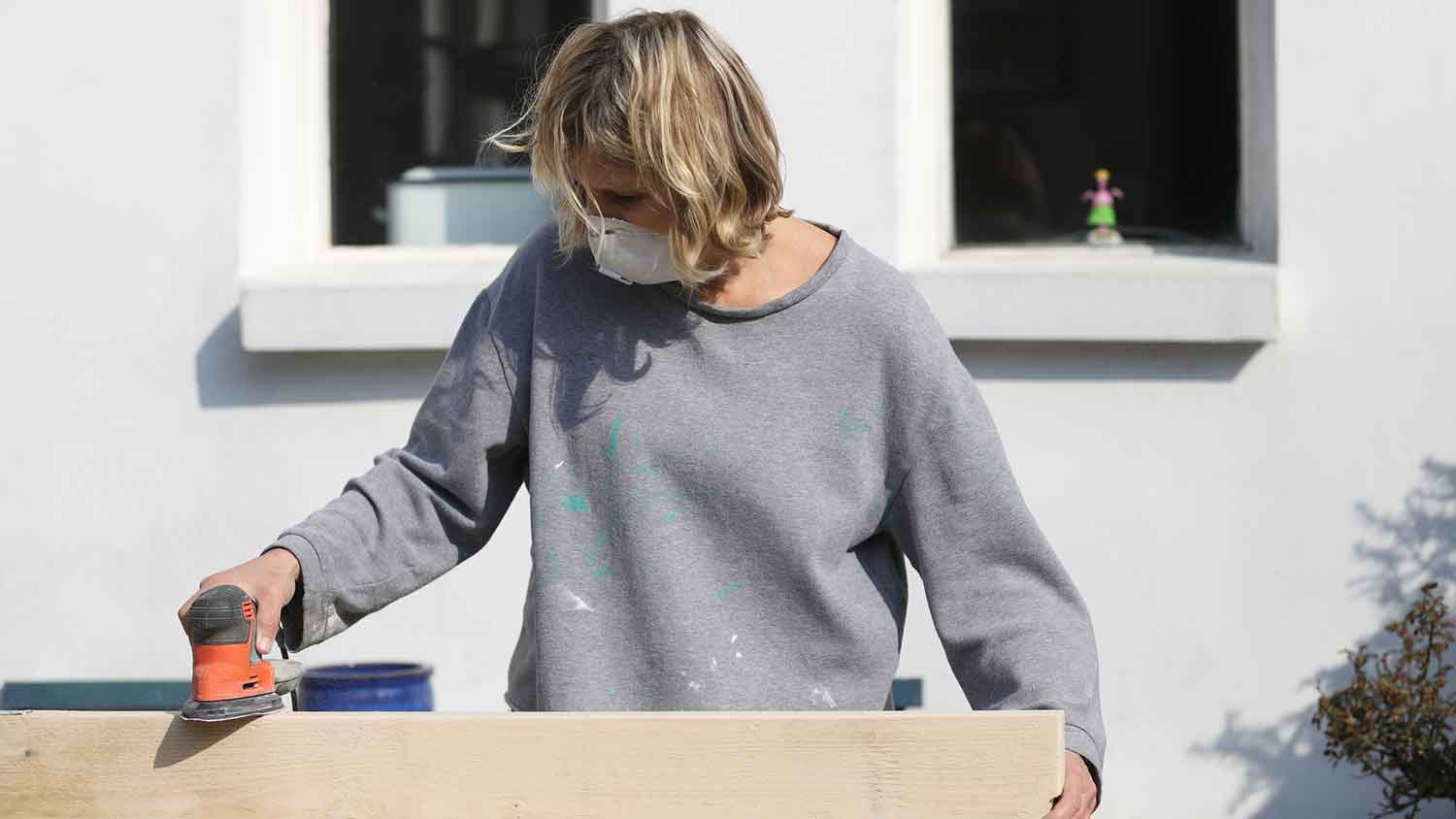How to Remove Mold From Wood Furniture in 30 Minutes
Break the mold (and remove it) to save your wood furniture


When you decide to purchase solid wood furniture, you’re looking for timeless beauty and durability. Wood furniture is extremely tough—unless it runs into a teething puppy. Another danger to wood furniture is significant exposure to moisture, which leads to mold growth.
Fortunately, it’s far easier to learn how to remove mold from wood furniture than to alleviate the damage from razor-sharp puppy teeth. Learn how you can remove the mold in a 30-minute DIY process or by hiring a pro.
Why Do I Have to Remove Mold From Wood Furniture?

Mold remediation on wood furniture is important for preserving it. When mold grows on wood furniture, it could penetrate the wood and cause damage that’s difficult to remediate. It can also discolor the furniture, harming the look of the piece.
Letting mold grow unchecked could cause it to spread to other items, including fabric on furniture or nearby drywall or flooring. Some people are susceptible to mold spores, meaning a significant growth of mold could harm the health of your loved ones.
If you don't remove the mold from your wood furniture, you’ll eventually have to discard it.
How Much Does It Cost to Remove Mold From Wood Furniture?
If you remove mold from wood furniture yourself, the average cost is $50 to $300. However, people will spend less than the average range if they have some of the required items already and if the mold has not spread elsewhere.
The starting cost for a professional to remove mold is around $375, but it could be less for a single piece of wood furniture. You’ll want to ask a mold remediation professional for an upfront quote on a limited mold removal project like this.
How to Identify Mold on Wood Furniture

Identifying mold on wood furniture is relatively easy for most people. However, mold can mimic other types of wood discoloration, so it’s important to know what to look for.
Color and Texture
Mold can be almost any color, although black, green, and brown are the most common. Mold will be slimy or fuzzy, giving it a three-dimensional appearance. If left to grow unchecked, mold can permanently darken the wood that remains after you remove it.
Odor
If mold is present on your wood furniture, it will have a strong, earthy odor. Many people find this odor extremely off-putting.
Damage
Wood furniture covered in mold may have damage that weakens it and resembles rot. The wood might swell or look warped.
General Discoloration
Discolored wood furniture doesn’t necessarily have mold on it. Some of the signs that indicate discoloration instead of mold include:
Water staining that’s now dry but lightens or darkens the wood
Rings on the furniture from water glasses
Appearance of gray colors from aging and weathering
Black or rusty stains from metal fasteners on the wood furniture
Fading of colors from sunlight exposure outdoors
If you are uncertain whether your furniture has mold or discoloration, you could hire a local mold testing professional to inspect it for you.
How to Remove Mold From Wood Furniture

To remove mold from wood furniture, the best option is to spray the moldy area with an equal mixture of vinegar and water. Vinegar is an effective mold-killing solution, and many people will have it in the house already, saving money on the project.
If you don’t want to use vinegar, you can try a few other mold removal options. Before starting the cleaning process:
If possible, move the furniture outdoors for the benefit of sunlight and ventilation.
Put on your protective gear before touching or going near the mold.
Use a vacuum or a soft-bristled brush to pull away some of the mold spores.
Vinegar
Distilled white vinegar is a good product for killing mold. Vinegar can even penetrate the wood to remove the mold at its source.
Mix equal parts vinegar and water in a spray bottle. Spray the mixture on the moldy areas and let it sit for about 30 minutes before wiping it with a cloth.
Using vinegar around the house is also an effective option for eliminating odors, removing weeds, or cleaning laundry.
Mold-Killing Solution
You could purchase a bottle of mold-killing formula at your local hardware store. Follow the directions for application on the bottle. However, because vinegar works so well on mold, it’s often less expensive and easier to use.
Hydrogen Peroxide
Hydrogen peroxide, or bleach, is an effective mold-killing solution that you may have at home. It penetrates the wood effectively to reach the source of the mold. Spray it over the mold and let it sit for about 10 minutes before wiping it.
Although 3% diluted hydrogen peroxide could damage the wood, it’s a safer solution to use than bleach. Apply the solution to an out-of-the-way part of the furniture to test for damage.
Rubbing Alcohol
If you have rubbing alcohol at home, also called isopropyl alcohol, you can spray it directly onto the mold. Let it sit for a few minutes before wiping the surface. Repeat the process if necessary. Rubbing alcohol dries out the mold and effectively kills it.
Vodka
Although it might seem silly to use vodka for cleaning mold, it works similarly to rubbing alcohol. Vodka has a high alcohol content, which is effective for drying and killing mold. Put it in a spray bottle and apply it to the moldy wood. You should let it sit for about an hour before wiping it away.
You may not want to use expensive vodka to kill mold when far less expensive rubbing alcohol and vinegar will work just as well—but it is effective.
Detergent
If you have painted wood or stained wood with a protective coating, you can apply a mixture of warm water and dishwashing or laundry detergent to the mold. Wipe it away after a couple of minutes.
A small patch of mold doesn’t usually penetrate coated or painted wood, and since detergent doesn’t kill mold, it’s not as useful when the mold penetrates wood.
Sanding

For wood furniture where the mold deeply penetrates the material, you may need to use a power sander to take out the mold. This process will take at least 30 minutes.
If you are unfamiliar with a power sander, understand that if you stay in one place too long, you could cause gouges and shallow spots in the wood furniture. If the mold deeply penetrates the wood, you should hire a professional instead of sanding.
How to Prevent Mold on Wood Furniture
Although you can remove mold from wood furniture, you should also take preventative measures to keep it from happening again. By stopping mold from appearing on wood furniture in the first place, you don’t have to deal with the cleanup and possible exposure to spores.
Some of the most important preventative steps you can take include:
Immediately cleaning any liquid spills
Moving the furniture away after flooding or a broken pipe
Using fans and dehumidifiers near damp areas
Improving ventilation in the room with wood furniture
Exposing the wood furniture to sunlight when it’s damp
Not using excessive liquid to clean the furniture
Painting the wood or adding a protective coating
Moving outdoor wood furniture indoors on rainy days
If you have limited options for protecting your wood furniture from mold exposure, removing moisture is the most important thing you can do. Mold needs regular moisture to begin growing.
DIY vs. Hiring a Mold Removal Pro
Most people can remove mold from wood furniture themselves in around 30 minutes, especially if they spot the mold problem early before it can deeply penetrate the wood. Mold removal on wood furniture is a straightforward process that doesn’t require purchasing specialized tools. Always wear protective gear like gloves, goggles, and a face mask to guard against inhalation of mold spores.
If you do not want to try to work around mold yourself, though, it’s perfectly understandable. You can hire a local mold removal professional to do the job for you. Ask the pro for a price quote for the work, as many mold remediation pros will have a minimum charge to come to your home, regardless of the size of the job.
Frequently Asked Questions
Yes, mold on wood furniture can be dangerous, especially if it is identified as black mold. Inhaling spores or touching mold can make some people sick with respiratory issues, skin rashes, and eye irritation. However, some people have mild or no symptoms after exposure to mold. If you are going to clean mold off wood furniture, you should wear protective equipment to avoid direct exposure.
You can throw away moldy things if desired, but you can also clean the mold from certain items. Saving wood furniture by cleaning the mold is possible. You also can clean mold from plastic, metal, and glass materials. It’s far more difficult to clean mold from paper, carpet, cardboard, and mattresses.
To remove mold from fabric that’s part of your wood furniture, the best option is to take the fabric off and place it in the washing machine. If you cannot take the fabric off, it helps to move the furniture out into the sun. Use a high-quality vacuum to remove any mold spores that are present. You can try spraying the mold with a 50/50 vinegar-water mixture. Hydrogen peroxide is also a possibility for removing mold from fabric, but it could damage certain types of fabric.
Yes, you can save moldy wood furniture by removing the mold as soon as you notice it. Mold can penetrate and damage porous wood, though, so waiting to clean it could lead to significant damage. If a large coverage area of mold grows over several months, you may want to ask a professional to try to save the piece. If the damage is bad enough, though, even a pro might not be able to save it.





- How to Remove Mold From Fabric Furniture
- How to Test for Mold in Your Home
- 12 Signs of Mold in Your House and What to Do About It
- What Does Black Mold Look Like?
- How to Get Rid of Black Mold Safely and Completely
- Black Mold in Your Air Ducts: Symptoms, Signs, and Prevention
- How to Prevent Mold Growth in Every Area of Your Home
- How to Get Rid of Mold in Air Ducts: 7 Potential Methods
- How to Get Rid of Mold Smell in Your House
- The Complete Guide to Mold Removal Best Practices










